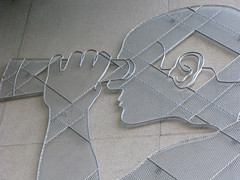
This post is one of a series of recommendations arrived at by
going through the entire list of South by Southwest panels that are up
for consideration for 2009.
Important: Would love your support for "FlashMarkets: From the Roman Agora to the Mobile Web." Click here to vote or learn more.
SXSW 2009 Panel Recs: Communities and Social Networks
Women Engaging Tech: Ferocity Fuels the Phenomenal
Gwen Bell, http://www.gwenbell.com
"Four women, all powerhouses in their fields of women, technology +/or startups, come together to show how we’ve overcome FAIL, found a way to reach out + learned the power of unplugging (standing our ground + not letting tech take over _every single aspect_ of our lives)."
The Future Of Social Networks
Charlene Li, CLI Group
"Social networks will be like air, in that they will permeate everything that we do online AND offline. We’ll look at the underlying technologies that will make this possible, how it will evolve, and the business models that will support it."
Social and Nonprofits ROI: Case Study Slam
Beth Kanter, Beth’s Blog
"Using a poetry slam format, each panelist will present a five-minute poem or story about how their organization has successfully implemented a social media strategy experiment and how they considered the ROI. The audience will have ample opportunity to ask questions and respond."
How to Explain Social Media to the C-suite
Rex Hammock, Hammock Inc.
"You want buy-in for your social media projects? Then tell the C-level execs in your company [or at your client] why social media makes business sense. What you can measure. What you can market. How to make the pitch."
From Flickr and Beyond – Lessons in Community Management
Heather Champ, Flickr
"Companies across industries are developing and fostering online communities, recognizing the benefits of connecting with customers on the Web. Unfortunately, not all communities thrive to become a successful vehicle for businesses. Leaders of top online communities from Flickr to Facebook will discuss top best practices for managing online communities."









 Short version: I’ve proposed a panel for South by Southwest on the topic of how customers are creating new types of markets. Panels are chosen in part by votes from YOU. I’d love your vote. Three steps to voting:
Short version: I’ve proposed a panel for South by Southwest on the topic of how customers are creating new types of markets. Panels are chosen in part by votes from YOU. I’d love your vote. Three steps to voting:
